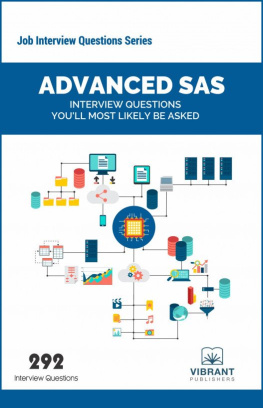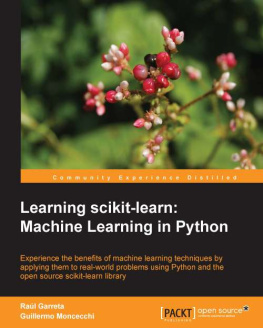The Complete MBA Coursework Series
100 Business Math Questions and Answers
MY LORD, INCREASE MY KNOWLEDGE Noble Quran
A Tale of Two Brothers
Hicham and Mohamed Ibnalkadi
Preface
Motivation
This book is designed as a part of The Complete MBA Coursework Series, established to equip the professionals and students with the eminent capabilities and hone their skillset. The motivation behind this series is the need to establish a thorough and complete MBA coursework, following the core and elective courses of prestigious institutions like Wharton and Harvards Business Schools. With this self-motivated study of the MBA curriculum, students and professionals can tailor their MBA according to their interests and need. Thus, embarking on this self-study MBA coursework rather than a traditional, costly, and lengthy MBA degree program is worth the time.
MBA degree programs are very costly, although the skill boost associated is worth acquiring. Thus, as a part of the MBA coursework series, the following book helps the students learn the basic terminologies and techniques associated with Busines Math. This book does not attempt to provide a self-contained discussion of mathematics. Instead is a decent introduction to Busines Math courses used in top MBA programs. Further, the introductory is stemmed from our professional experience. Finally, we want to thank Hina Aslam and Sara Aslam for providing us with many suggestions and valuable feedback on this book.
Prerequisites
To make the book as accessible as possible, the reader should have the basic working knowledge of linear algebra, calculus, and basic statistics. However, prior exposure to undergraduate Linear Algebra is also not required. The emphasis throughout the book is on the understanding of basic terminologies and valid application of techniques onto the real data and problems.
Final few words
Thank you for buying this book, and feedback is highly appreciated for enhancing future versions. I hope that all readers gain something useful from this book and boost their knowledge of econometrics that the author aimed at while writing it.
Although this book has been thoroughly checked and proofread, typos, errors, inconsistencies in notation, and instances where I have got it wrong are bound to sneak in. Any readers spotting such errors or addressing certain questions or comments are kindly requested to contact our customer service through this email ( ) before writing any review online. Finally, feel free to return the book and ask for a refund if unsatisfied.
A Tale of Two Brothers
Hicham and Mohamed Ibnalkadi
Q1. How would you define statistics to a layperson?
Answer: Statistics is the field of Mathematics that analyzes and makes sense of numerical data. It can also be defined as a set of tools and methods for numerical data analysis.
Its goal is to help extract information and meaning from numerical data sets, like representations, predictions, estimations, behaviors, tendencies, patterns, probabilities and so on.
Q2. What is a population data set?
Answer: In Statistics, a population data set is the set of all members that are being studied, which usually have at least one common characteristic. It is the set of all members which produce the data of a particular study or research.
Let us clarify with some examples:
- For a study on the grades of the students of a given school, the population data set is the set which contains all students of the school.
- For a study on the mean velocity of a road, the population data set is the set of all cars that travel through that road.
- For an election poll, the population data set is the set of all citizens who are able to vote on that election.
Sometimes it is not feasible to research and collect data from every member of a population data set because of its size or distances to be traveled. Then, a study can be done on a representative subset of that population, which is called a sample data set.
Q3. What are data frequency tables?
Answer: Data frequency tables are tables that contain the values of a particular variable being studied and the number of times that it occurs within the members of a population (its frequency).
Each entry of the table is a row that contains two columns, one that represents the value, and another one that represents the frequency (i.e. how many times that value appears) with which that value occurs in the population.
Usually the values on a frequency table are arranged according to their ascending order.
Q4. How do you define location statistics?
Answer: Location statistics is the branch of statistics that stablishes ways of determining typical values for a statistical population, i.e. values around which a certain statistical distribution varies, according to its mathematical characteristics. Those typical values are called locations and the most usual ones are the mean, the median and the mode.
Q5. What is the mean or average?
Answer: It is measure of location, i.e. a value that represents in general all members of a studied population. It is calculated by summing up all the values of the members of a population data set and dividing the result by the number of members of that population data set.
Considering

values

, the average value

is calculated as:
Calculating the mean value or average value is equivalent to finding the value of each member of a data set, if all of them had the same value and still added up to the same total. It is a value around which all members of the population orbit, some above it and some under it, in a way such that the sum of all the differences from each member to the mean value add up to zero.
Let us clarify with some examples:
- For a study on the grades of the students of a given school, the average student grade is calculated by the sum of the grades of all students divided by the amount of students in that school.
- For a study on the ages of customers, the average age is calculated dividing the sum of all customers ages by the number of customers.
Q6. What is a weighted mean?
Answer: It is a measure of location, i.e. a value that represents in general all members of a studied population. It is a variation of an arithmetic mean or average. While in an arithmetic mean all values contribute equally to the result, in a weighted mean, each value contributes more or less, i.e. each value has a different weight.
The weighted mean is calculated by summing up the products of each value by its weight and then dividing the result by the sum of all weights.
Considering

values

whose weights are








 values
values  , the average value
, the average value  is calculated as:
is calculated as:
